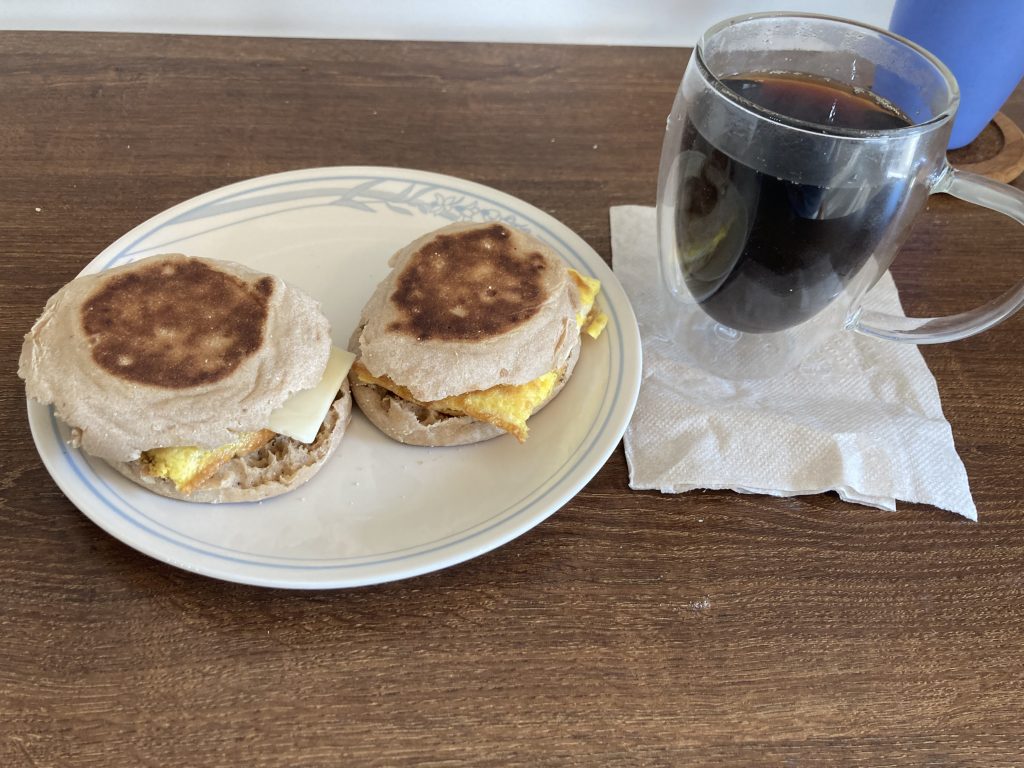Tonight, I managed to execute some delicious and well planned mischief meal planning. One of today’s primary objectives was to make a trip to Sprouts Farmer’s market in search of fresh produce. In my neck of the woods, it’s often the best place to get fresh vegetables at the lowest prices, but also an inconvenient trip compared to my usual supermarket. Not exactly the best deals on meat, especially when you’re not overly crazy about the details. But, not wanting to make two trips, I opted to splurge a bit.
This lead to the perfect plan: pork chops in the oven, along with sprouts and carrots to roast. Meanwhile, prepared an onion and tossed a ribeye on the cast iron. I rather figured, if I was going to make sprouts and sliced carrots, then I may as well go ahead and make the pork. This thinking in turn, lead me to consider that if I had the smarts to chop the onion ahead of cooking the steak, I’d have those perfecto by the time the meat was done cooling off. I mean, the skillet is already greased and hot, so why the hell not take advantage?
Well, for some folks this plan might seem trivial but for me it’s more of a special occasion meets planning. See, I rarely bother to make a steak at home anymore. It’s usually too narrow a margin to get it right and fairly wasteful when cooking for one. It’s the kind of thing I’d cook more often if I had a grill outside, or more mouths to feed.
Left to my own devices, I also like to get most of the cooking done over the weekend, so I’ll prefer meals that don’t require rapt attention and generate leftovers. Steaks, done right, fit in the spectrum of “Don’t bother me, I’m cooking.” Not something I’d combine with making food for a couple days.
Three points of success made me happy: fresh roasted sprouts, which are freaking delicious; not messing up the steak; and the combination of oil and onions leading to my cast iron skillet being trivially cleaned afterwords.
I love it when a plan comes together.

